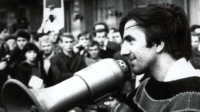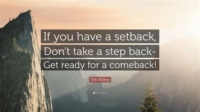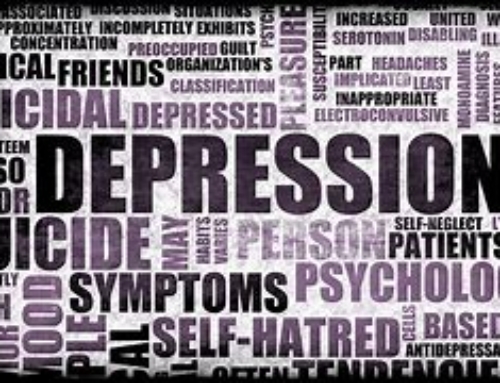
The last few weeks have been tough for people with views like mine. I don’t need to rehash the bad news. The proper nouns are enough. Gaza. Ukraine. The House of Representatives. Climate change. And more.
It’s not just the national headlines. Several of my friends have turned to me for advice when their projects hit roadblocks. I finally asked one of those friends why they turned to me and was told that I always seemed so optimistic.
I scratched my head in disbelief because I’m not by nature or training all that optimistic. So, I spent the weekend thinking about it and realized that I was different in one key way that I haven’t incorporated in my own work enough now that I’m focused on building grass roots and locally led movements in the United States.
Rudi Dutschke’s Legacy
I went back to an idea that grabbed my attention early in my career, probably when I was head of Oberlin’s SDS chapter during my senior year in college. Because I was already interested in European politics in general and its new left in particular, I had been drawn to the charismatic German student activist, Rudi Dutschke, who led its far more radical SDS, Students for a Democratic Socialism.
Among other things, he called for a “long march through the institutions.” Remember that many students in those days looked fondly (and mistakenly) at China and its cultural revolution for inspiration. Dutschke pointed us instead toward the Long March in 1930s in which the Communist Party and its arms spent more than a year on the road, fleeing the Nationalist forces, but organizing along the way.

As I understood Dutschke at the time, he was calling on us to do the same thing. Prepare for a long slog. In the Germany or United States of the 1960s, the long march would not be a physical one in which we fought an average of more than one pitched, armed battle every day against the authorities. Rather, we could and should join the established institutions and change them from within. He knew it would not be quick or easy—hence the reference to a long march. He knew that there would be setbacks. But we could succeed if we persisted and did so in ways that made sense given the social, economic, and political realities we faced in Western Europe or North America at the time. Dutschke also harbored no illusions. He knew that the long march through the institutions was going to be, well, long. There would be setbacks, including the fact that some German radicals were forced out of the civil service in subsequent decades.
Dutschke did think of himself as an outsider who later ran something he called the Extraparliamentary Opposition. That did not mean that we should avoid working “inside the system” as we (derisively) put it in those days. If nothing else, we would age out of being students who could be full time radicals and, as he did, we would find ourselves with families and the need to make some kind of a living!
Dutschke never had the chance to see whether such a strategy would succeed. He was gravely wounded in an assassination attempt in 1969, was never able to work effectively again, and died in 1979 before he turned 40.
But if there were a heaven and he found himself there, Dutschke would look back on the half century since his death and note two things. The long march through the institutions has borne fruit on a host of issues—race, gender, LGBTQ issues, climate, and more. Yet, we’ve barely scratched the surface, and the march has to continue at a time when it faces one kind of headwind that didn’t bother us that much in the 1960s and 1970s—the inability to deal with setbacks.
The Long March Through the Institutions—2020s Style
But that’s not why my thoughts turned to his work this week.
Many of this decade’s setbacks have undercut many activists’ sense of personal power or agency—especially the younger ones who took to the streets and joined social change movements at some point since the pandemic began and then everything else occurred in its wake.
Some of the setbacks are truly deflating and should lead us to question and then revise our strategies. But the fact remains that we need to develop tools that allow activists to understand that they are coming and to be able to overcome them.
In essence, I’m thinking about the equivalent of training in nonviolence that we got in the 1960s before we engaged in civil disobedience. We anticipated what might happen to us and practiced our responses.
Here, I’m thinking about helping this generation of activists strengthen their “resilience muscle.” Or maybe I should say beginning to think because I have no practical suggestions and was just overwhelmed when I encountered over 40,000,000 references when I searched for “resilience coach.” This article (#2 on my Ecosia search list) lays out a reasonable starting point for what resilience training adapted to political activism could look like.

I’m nowhere near ready to talk about political resilience in any more detail here. Patricia Shafer and I will, however, have to get there and include it prominently in Peace is a Verb, which we hope to finish by the beginning of next summer.
Echos from My Own Political Past
As I began thinking about this post and remembered Rudi Dutschke, I also remembered my first book which was on the new left in France. I decided to do it on the Unified Socialist Party which had been one of the big winners of May Movement in 1968 and won more than 5 percent of the vote in the next year’s presidential election. For an American radical, this was the ideal PhD dissertation topic.
My advisor (properly) asked me to focus in on a single question—why activists got involved and stayed involved in the PSU’s day-to-day activities–on the assumption that I would uncover some lessons for my American colleagues. It became clear to me that Roy Pierce had put me on to something because, by time I got to France in mid-1972, the party had begun would can be best and most charitably called its death spiral. So, I began asking why people got and stayed involved even if the future did not look promising.
After lots of very weird regression analyses, the most important underlying factor for sustaining activism in a declining organization was its members’ sense—rightly or wrongly—that they were having an impact.
Fifty years later, perhaps we should be doing more to help today’s activists not only see where they are making a difference but do the kind of research I didn’t do back in the day—how can we maximize the probability that they will, in fact, have an impact.
Luckily for you, the book has been out of print for decades….
The views and opinions expressed in this article are those of the author and do not necessarily reflect the official policy or position of the Alliance for Peacebuilding or its members.





